We will keep fighting for all libraries - stand with us!

Send me an email reminder
By submitting, you agree to receive donor-related emails from the Internet Archive. Your privacy is important to us. We do not sell or trade your information with anyone.
Internet Archive Audio

- This Just In
- Grateful Dead
- Old Time Radio
- 78 RPMs and Cylinder Recordings
- Audio Books & Poetry
- Computers, Technology and Science
- Music, Arts & Culture
- News & Public Affairs
- Spirituality & Religion
- Radio News Archive

- Flickr Commons
- Occupy Wall Street Flickr
- NASA Images
- Solar System Collection
- Ames Research Center

- All Software
- Old School Emulation
- MS-DOS Games
- Historical Software
- Classic PC Games
- Software Library
- Kodi Archive and Support File
- Vintage Software
- CD-ROM Software
- CD-ROM Software Library
- Software Sites
- Tucows Software Library
- Shareware CD-ROMs
- Software Capsules Compilation
- CD-ROM Images
- ZX Spectrum
- DOOM Level CD

- Smithsonian Libraries
- FEDLINK (US)
- Lincoln Collection
- American Libraries
- Canadian Libraries
- Universal Library
- Project Gutenberg
- Children's Library
- Biodiversity Heritage Library
- Books by Language
- Additional Collections

- Prelinger Archives
- Democracy Now!
- Occupy Wall Street
- TV NSA Clip Library
- Animation & Cartoons
- Arts & Music
- Computers & Technology
- Cultural & Academic Films
- Ephemeral Films
- Sports Videos
- Videogame Videos
- Youth Media
Search the history of over 866 billion web pages on the Internet.
Mobile Apps
- Wayback Machine (iOS)
- Wayback Machine (Android)
Browser Extensions
Archive-it subscription.
- Explore the Collections
- Build Collections
Save Page Now
Capture a web page as it appears now for use as a trusted citation in the future.
Please enter a valid web address
- Donate Donate icon An illustration of a heart shape
You'll Need 1
Time Travel the Internet: View Any Website from (Almost) Any Year

What you'll need

Posted in these interests:
Most people don’t know that you can look up past “snapshots” of almost any website. Archive.org is a 501(c)(3) nonprofit organization that was formed to build an expansive Internet library. Since 1996, the organization has been archiving digital content to preserve the legacy and history of the Internet and the World Wide Web.
1 – Visit archive.org
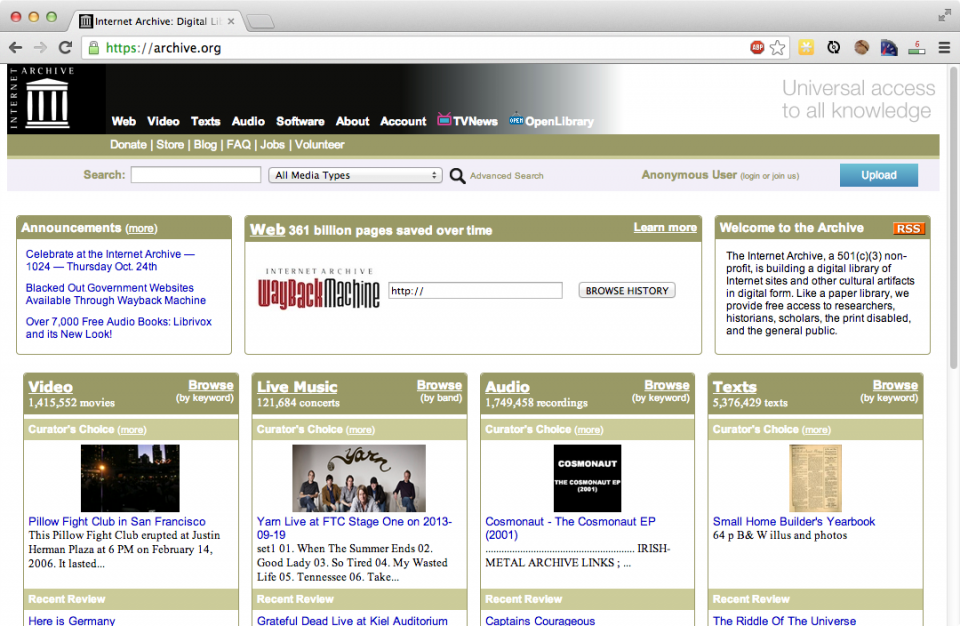
Using your browser, navigate to Archive.org .
2 – Enter the website you’d like to view and click Browse History

I decided to check out Amazon’s humble roots since I’ve been reading the Jeff Bezos biography One Click .
3 – Select a year
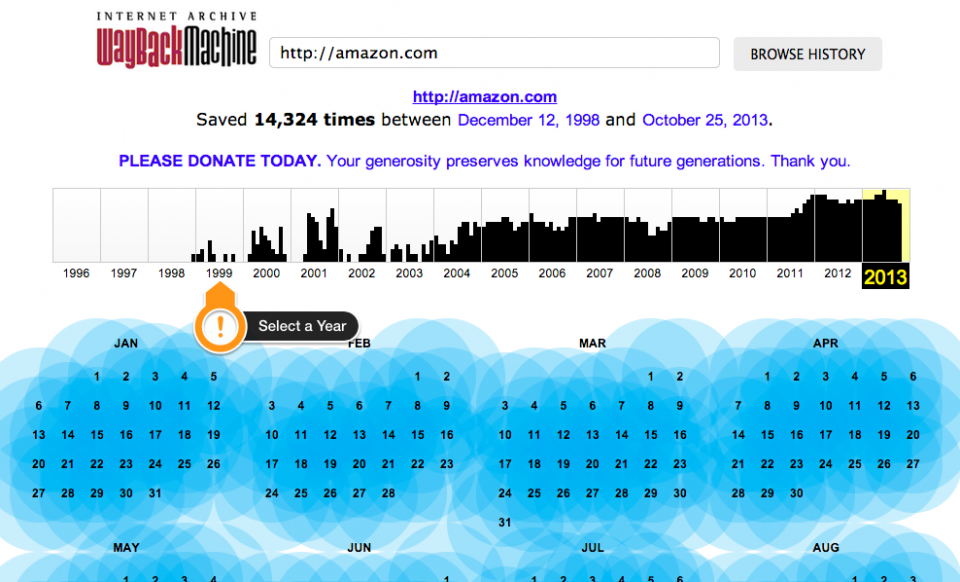
The Archive.org meta crawler visits popular sites more often. Each blue circular bubble indicates that a snapshot exists. In my case I searched for Amazon, the 7th most popular site on the web; this explains the blue blur that you see below.
You might notice by the “annual” snapshot bar graphs that overall snapshots have increased over the years — this is due to hard drive space becoming less expensive, resulting in more crawls being possible. After all, each snapshot isn’t just a mere image — it’s an explorable version of the site.
From here, you can either select a blue bubble to view the relevant snapshot or choose a different year to view. Let’s go deeper. Select an older year.
4 – Select a snapshot
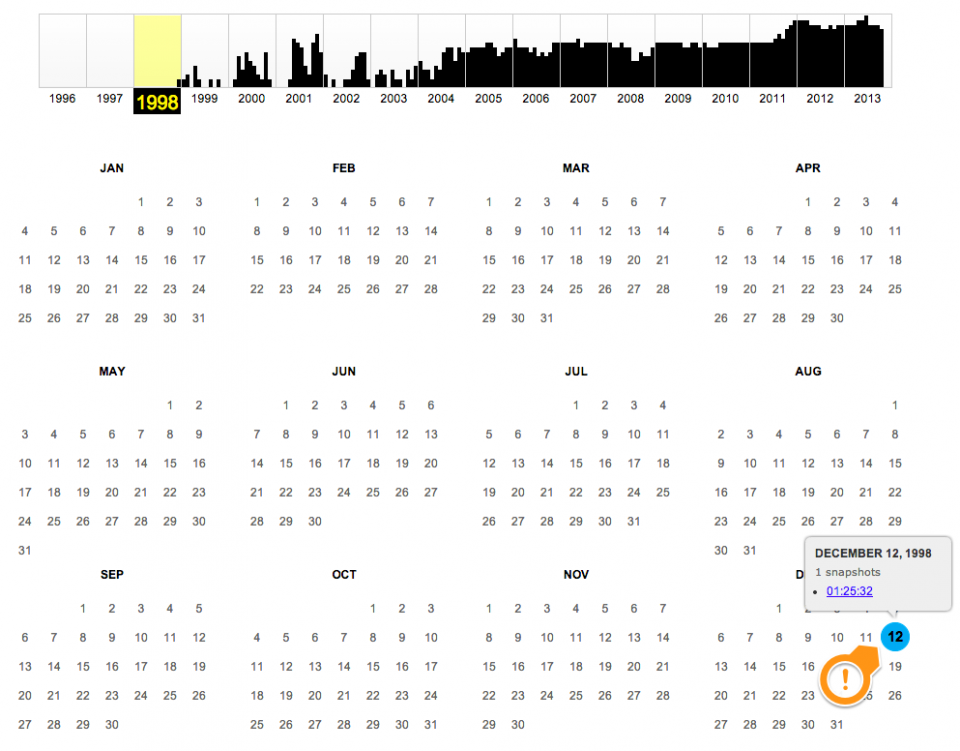
After you’ve selected the year, find the specific date you’d like to explore. Explorable dates are denoted by the blue bubble. A larger bubble means that multiple snapshots exist for that date. Click on a date bubble.
5 – Bask in the glory of old design

It’s interesting to see not only how web design has changed but also how far we’ve come in such a short period of time.
Amazon in 1996: See it in action
6 – Google in 1998
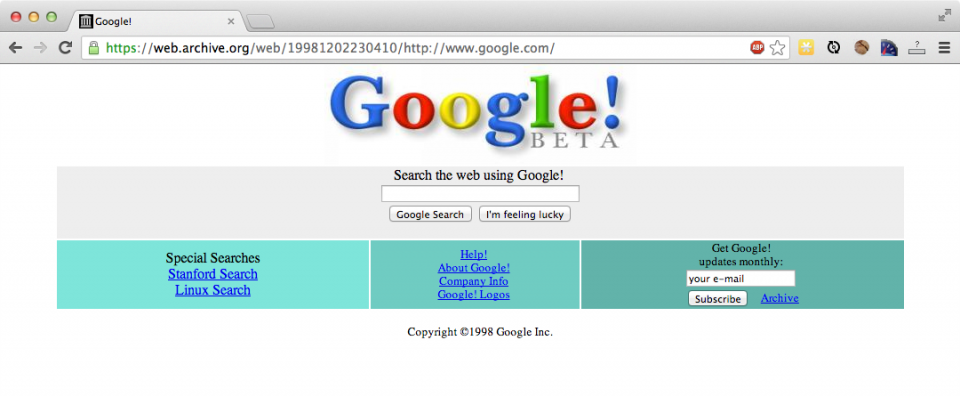
See it in action
7 – YouTube in 2005

8 – eBay in 1999

How to Change Your Frontier WiFi Password

There are a few reasons you might want to update or reset your WiFi password: making your network more secure, and making your password easier to remember and type. Improved network security You can add an extra layer of security to your network by changing the WiFi password. As long as your new password is
In these interests
Internet internet • 36 guides, web design webdesign • 5 guides, www www • 2 guides, share this guide.
467 guides
Introducing Howchoo, an enigmatic author whose unique pen name reflects their boundless curiosity and limitless creativity. Mysterious and multifaceted, Howchoo has emerged as a captivating storyteller, leaving readers mesmerized by the uncharted realms they craft with their words. With an insatiable appetite for knowledge and a love for exploration, Howchoo's writing transcends conventional genres, blurring the lines between fantasy, science fiction, and the surreal. Their narratives are a kaleidoscope of ideas, weaving together intricate plots, unforgettable characters, and thought-provoking themes that challenge the boundaries of imagination.
Related to this guide:
There are a few reasons you might want to update or reset your WiFi password: making your network mo
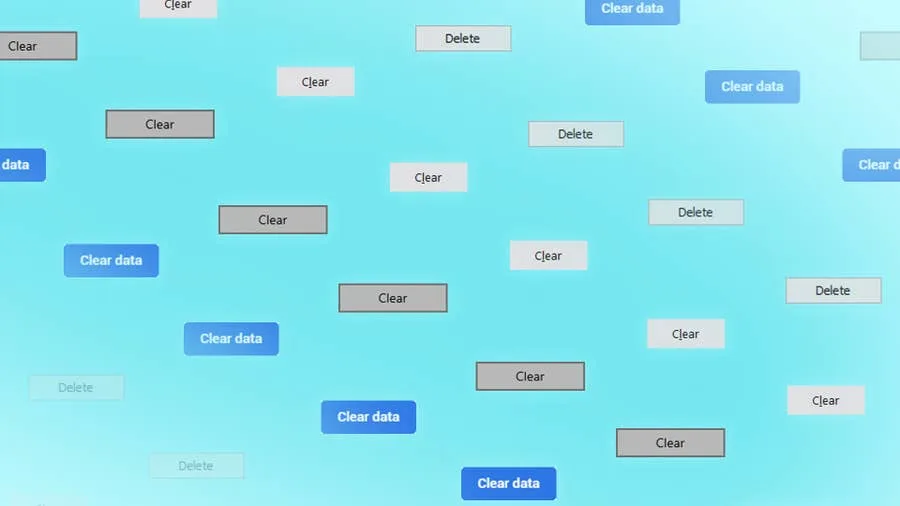
How to Clear Your Browser Cache for Any Browser
Clearing your browser cache is a great way to solve common internet issues. If a webpage isn’t
How to Log in to a Linksys Router
This guide will show you how to log into your Linksys router using the router’s IP address and
How to Trigger a Phone Call using an HTML Link
If you’d like your visitors to be able to open a phone application straight from your website
How to Change Your Charter Spectrum WiFi Password
If you’re a Charter WiFi user, you need to keep your network secure. Changing your WiFi passwo
How to Change Your Verizon FiOS Wi-Fi Network Name
Changing your Wi-Fi network name has never been easier. From web interfaces to mobile support, Veriz

Make YouTube Video Embeds Responsive Using Pure HTML and CSS
Surprisingly, normal YouTube embeds are not automatically sized to the browser window as it is resiz
How to Log in to a TP-Link Router
If you’re a TP-Link customer, you need to access your router. This guide covers everything you
How to Change Your Verizon FiOS Wi-Fi Password
Want to keep your home network safe? Knowing how to change your Wi-Fi password is network security 1

How to Find Your Network Security Key (And Protect It!)
Feel free to skip ahead to see how to find the network security key. A network security key is a fa
Discover interesting things!
Explore Howchoo's most popular interests.
About the Time Travel Service
Time travel find.
- Web archives: Internet Archive , The Public Record Office of Northern Ireland (PRONI) , Bibliotheca Alexandrina Web Archive , UK Web Archive , Bayerische Staatsbibliothek , Web Citation , Library of Congress , Archive-It , UK Parliament Web Archive , UK National Archives Web Archive , UK Goverment Web Archive , Wikipedia , Wikia , Canadian Archive , National Library of Israel , archive.is , Bibliothèque et Archives nationale du Québec , Croatian Web Archive , Webarchiv , Icelandic Web Archive , Arquivo.pt , perma.cc , Catalonia Archive , Athens University Archive , York University Archive , Estonian Archive , National Library of Ireland , National Records of Scotland , Slovenian Archive , Stanford Web Archive , National Diet Library in Japan , The National Archives and Records Administration , GitHub , arXiv archive.today , Archive-It , Arquivo.pt: the Portuguese Web Archive , Bayerische Staatsbibliothek , Bibliotheca Alexandrina Web Archive , DBpedia archive , DBpedia Triple Pattern Fragments archive , Canadian Government Web Archive , Croatian Web Archive , Estonian Web Archive , Icelandic web archive , Internet Archive , Library of Congress Web Archive , NARA Web Archive , National Library of Ireland Web Archive , National Records of Scotland , perma.cc , PRONI Web Archive , Slovenian Web Archive , Stanford Web Archive , UK Government Web Archive , UK Parliament's Web Archive , UK Web Archive , Web Archive Singapore , WebCite , Bibliothèque et Archives nationale du Québec , National Library of Israel , the Museum of Czech web,Webarchiv , National Diet Library in Japan , York University Archive -->
- Transactional web archives that run the SiteStory software that self-archives web server content.
- Systems that have a bespoke version API but for which a TimeGate server was implemented, for example, arXiv.org , GitHub .
- MediaWikis that have installed one of the Memento extensions for MediaWiki , for example, https://www.w3.org/wiki/Main_Page .
Time Travel Reconstruct
- Memento-compliant Web archives: archive.today , Archive-It , Arquivo.pt: the Portuguese Web Archive , DBpedia archive , Icelandic web archive , Internet Archive , Library of Congress Web Archive , National Library of Ireland Web Archive , perma.cc , PRONI Web Archive , Stanford Web Archive , UK Government Web Archive , UK Parliament's Web Archive , UK Web Archive , Bayerische Staatsbibliothek
- MediaWikis that have installed one of the Memento extensions for MediaWiki , for example, http://coptr.digipres.org/Main_Page .

5 Best Wayback Machine Alternatives To Browse Old Websites

The Internet has been around for more than two decades now. During this time, many websites were created and removed. Thankfully, many websites, such as the Wayback Machine, can help us revisit these old web pages. So here is a list of some of the best Wayback Machine Alternatives to help you browse old websites and expired URLs.
Every webpage on the Internet is stored forever for posterity. Thankfully, we can access most archived web information by using sites like Wayback Machine. However, we have also listed other Wayback Machine alternative websites depending on your use case.
What is Wayback Machine?
Wayback Machine is a platform where you can access a digital archive of the World Wide Web. It was founded by the Internet Archive, a non-profit organization. The website allows users to see how websites looked in the past by entering their URLs.
Users can look at how popular websites such as Facebook, Twitter, and Google looked in the past by using this website. Users can also access content that has been removed or changed from the Internet .
However, the Wayback Machine website can be slow or unresponsive for some web pages. We have put together a list of some of the best Wayback Machine alternative websites.
Best Wayback Machine Alternatives
- Archive.today

Archive.today is a completely free online tool that allows users to navigate to any past page and capture a screenshot. It is pretty simple to use because of its accessibility and easy-to-navigate features. However, it works a bit differently as it captures duplicate pages from both Google and Yandex.
The website also supports Javascript, visuals, page links, and social media applications.
Thanks to these features, you can access many old websites precisely as they were before. With these features, it can support more social media websites than the Wayback Machine, making it even better. Therefore, it is one of the best Wayback Machine alternative websites available.
- Memento Time Travel

Memento Time Travel is another free website that lets you visit a website at a specific moment in time. It is based on Archive.today’s API that’s why it even supports web pages with heavy visualizations. You can even look for a website at a particular time of day.
The website self-archives web pages on servers. If you search for a particular page, it will search the entire server set to look for it. It supports many aspects of a webpage, including text, images, style sheets, etc. Unlike Wayback Machine, you don’t have to worry about data loss, making it a good alternative.
Resurrect Pages/ Go Back in Time

Resurrect Pages and Go Back in Time are browser extensions that allow users to see how a specific page used to look. The extensions use a variety of page caching and archiving services. They use caches from Google, Yahoo, MSN, and Gigablast to make up their library.
These extensions also use archival services such as The Internet Archive, archive.today, and WebCite. These browser extensions are pretty convenient as users can access them just by right-clicking on a web page.

Stillio is pretty different from other Wayback Machine alternatives as it periodically makes archives of selected websites. The service makes these archives based on the settings a user has chosen. The intervals can be hourly, daily, weekly, or whatever we decide.
The website also gives the users information such as search engine indicators and SEO ranking. However, it does not support javascript and other site functions. Due to this, you may find pages with broken links and wrong graphics.

ArchiveBox is an open-source self-hosted web archive and is an excellent alternative to the Wayback Machine. A user can set up the service to preserve any website they want. ArchiveBox is much better than services like Archive.org, as it can save these websites in multiple different formats.
Once you set it up, you can sleep soundly, knowing that your web page will be preserved no matter what happens. This service is mainly used to collect, save, and view websites you want to preserve offline.
Can you Wayback Machine a Google search?
Yes, you can copy any URL and open it in the Wayback Machine. You can choose to see that web page on any date you prefer.
Is there anything else like Wayback Machine?
There are many services available that can archive every webpage on the internet. The following services are most similar to Wayback Machine.
- Time Travel
- Resurrect Pages
- Go Back in Time
Nalin is a tech writer who covers VR, gaming, awesome new gadgets, and the occasional trending affairs of the tech industry. He has been writing about tech and gaming since he started pursuing Journalism in college. He has also previously worked in print organizations like The Statesman and Business Standard. In his free time, he plays FPS games and explores virtual reality.
Reach out to him at @NalinRawat
Similar Posts

How To Use 19 Built-In Troubleshooters Of Windows 10 To Fix Different Problems?
Being a Windows user, it can be any day when your PC might run into problems….

5 Resident Evil Village Mods You Need To Try Right Away
Didn’t anyone tell you not to bring a banana to a gunfight?

Top Confirmed Google Stadia Games And Rumored Ones
Google’s Stadia created quite a buzz when it was revealed at GDC last month. Formerly known…

Houseparty Shutting Down: You Can Try These Alternatives Instead
Here are the apps to use when Houseparty is gone.

Here Are The Top 9 Safest Cars In India Under Rs 10 Lakhs
Safety is now a major point to consider while buying a car.

7 Side Characters In Anime Who Are Impossible To Hate
Side characters can sometimes receive more love than the main character!
Advertisement
Time-travelling browsers navigate the web's past
By Paul Marks
16 November 2009

Time-travel computing past
(Image: Flying Colours Ltd/Getty)

In 1991, CERN hosted the world’s first web page. It is no longer hosted there, but a copy has been kept since 1992 by the World Wide Web Consortium

19 October 1996: Plane maker Boeing had what was, for the time, a very image-intensive home page

12 November 1996: How newscientist.com looked in its early days. This design was declared “best website” in 1995 by Internet Magazine

25 July 1997: The home page of NASA’s successful Mars Pathfinder, a small rover that was first to test an airbag landing

2 December 1998: It may have invented the internet, but DARPA’s first website was a cautious start in design terms

22 August 2001: The first webcam went live in 1993, allowing researchers at the University of Cambridge computer lab to tell if it was worth making a trip to the Trojan Room Coffee Pot. The webcam was finally switched off in 2001

4 February 2003: The BBC’s coverage of the Columbia space shuttle loss

20 March 2003: CNN on the World Trade Centre attacks of 2001
Finding old versions of web pages could become far simpler thanks to a “time-travelling” web browsing technology being pioneered at the Los Alamos National Laboratory in New Mexico.
Bookmarking a page takes you to its current version – but earlier ones are harder to find (to see an award-winning 1990s incarnation of newscientist.com, see our gallery of web pages past, right). One option is to visit a resource like the Internet Archive ‘s Wayback Machine. There, you key in the URL of the site you want and are confronted with a matrix of years and dates for old pages that have been cached. Or, if you want to check how a Wikipedia page has evolved, you can hit the “history” tab on a page of interest and scroll through in an attempt to find the version of the page on the day you’re interested in.
It’s a lot of hassle. But it shoudn’t be, says Herbert Van de Sompel , a computer scientist at Los Alamos. “Today we treat the web like a library in which you have to know how to go and search for things. We’ve a better way.”
That “better way” is a system that gives browsers a “time-travel” mode, allowing users to find web pages from particular dates and times without having to navigate through archives.
Total recall
Called Memento , the system Van de Sompel is developing alongside colleagues from Old Dominion University in Norfolk, Virginia, harnesses a function of the hypertext transfer protocol (HTTP) – the system which underpins the world wide web by defining how web pages are formatted and transmitted from servers to browsers.
One of HTTP’s standard functions is called content negotiation. This allows one URL to send multiple types of data, depending on the settings of the browser that contacts the URL: for instance, a browser in France accessing a URL may retrieve an HTML page in French, while accessing the same URL from the US may deliver an English version.
“Your browser does this negotiation all the time, but you don’t notice it,” says Van de Sompel. But HTTP content negotiation is not limited to arbitrating between media formats and languages – it can cope with any data type. So the team are adding another dimension to page requests: date and time.
“In addition to language and media type, we negotiate in time. So Memento asks the server not for today’s version of this page, but how it looked one year ago, for instance,” says Van de Sompel.
Browsing the past
Memento comprises both server and browser software. On a server running the open-source Apache web system, just four lines of extra code are needed to build in date-and-time negotiation. On the browser, a drop-down menu will let users enter the date and time for which they want to view a page.
So far, the team has developed a Memento plug-in for the open-source Firefox browser, plus a “hacked” version of Firefox with built-in Memento capability. Web pages need no extra features: the web server just needs to intercept the date-time requests of users. A demonstration of what Memento can do is available for any browser.
Of course, the whole idea requires website owners to store many more time-stamped versions of their pages than they do now, but the team think Memento will encourage them to do this.
“I would love to see Memento supported,” says Van de Sompel. “It would be such fun to set our browsers back in time and just browse the past.”
Jakob Voss, a developer with the Common Library Network in Göttingen, Germany, is an early Memento user – and he is already advocating use of Memento for sites with frequently updated pages like Wikipedia.
“Memento is only a proof of concept but it looks very promising and could be a great enhancement to the web. There is little support in today’s browsers for digging into archives, especially those with dynamic content management systems like wikis and weblogs,” Voss says.
“Tracking versions, and the provenance of web information, is becoming more and more important and Memento could help manage this complex task.”
He’s not alone in that view. Ian Jacobs, a spokesman for the World Wide Web Consortium in Boston, Massachusetts, agrees that “ URL persistence ” is a valuable aim – and that users should be able to browse the latest version of a page or one on a given date.
“The browser should allow the user to choose,” says Jacobs.
Van de Sompel is presenting the Memento technology today at a meeting of the National Digital Information Infrastructure and Preservation Program at the Library of Congress in Washington DC.
Journal reference: arxiv.org, arxiv: 0911.1112v2
Sign up to our weekly newsletter
Receive a weekly dose of discovery in your inbox! We'll also keep you up to date with New Scientist events and special offers.
More from New Scientist
Explore the latest news, articles and features
Mathematics
The mathematician who worked out how to time travel.
Subscriber-only
Most accurate clock ever can tick for 40 billion years without error
Antique clocks give a window into scientific innovation of times past, 'this century is special': martin rees on the vast span of time, popular articles.
Trending New Scientist articles
- for Firefox
- Dictionaries & Language Packs
- Other Browser Sites
- Add-ons for Android
Memento Time Travel by Harihar Shankar
Travel to the past of the web by right-clicking pages and links.
Extension Metadata
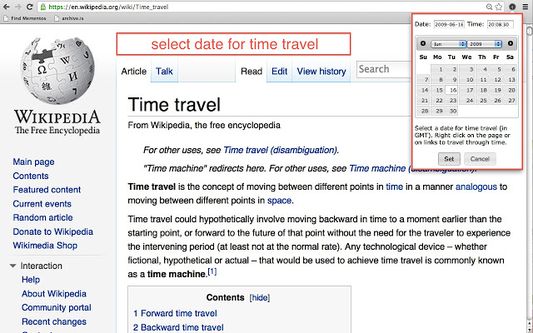
Star rating saved
This add-on needs to:
- Access browser activity during navigation
- Access your data for all websites
- Support Email
- Search Tools
- See all versions


Is Time Travel Possible?
We all travel in time! We travel one year in time between birthdays, for example. And we are all traveling in time at approximately the same speed: 1 second per second.
We typically experience time at one second per second. Credit: NASA/JPL-Caltech
NASA's space telescopes also give us a way to look back in time. Telescopes help us see stars and galaxies that are very far away . It takes a long time for the light from faraway galaxies to reach us. So, when we look into the sky with a telescope, we are seeing what those stars and galaxies looked like a very long time ago.
However, when we think of the phrase "time travel," we are usually thinking of traveling faster than 1 second per second. That kind of time travel sounds like something you'd only see in movies or science fiction books. Could it be real? Science says yes!

This image from the Hubble Space Telescope shows galaxies that are very far away as they existed a very long time ago. Credit: NASA, ESA and R. Thompson (Univ. Arizona)
How do we know that time travel is possible?
More than 100 years ago, a famous scientist named Albert Einstein came up with an idea about how time works. He called it relativity. This theory says that time and space are linked together. Einstein also said our universe has a speed limit: nothing can travel faster than the speed of light (186,000 miles per second).
Einstein's theory of relativity says that space and time are linked together. Credit: NASA/JPL-Caltech
What does this mean for time travel? Well, according to this theory, the faster you travel, the slower you experience time. Scientists have done some experiments to show that this is true.
For example, there was an experiment that used two clocks set to the exact same time. One clock stayed on Earth, while the other flew in an airplane (going in the same direction Earth rotates).
After the airplane flew around the world, scientists compared the two clocks. The clock on the fast-moving airplane was slightly behind the clock on the ground. So, the clock on the airplane was traveling slightly slower in time than 1 second per second.
Credit: NASA/JPL-Caltech
Can we use time travel in everyday life?
We can't use a time machine to travel hundreds of years into the past or future. That kind of time travel only happens in books and movies. But the math of time travel does affect the things we use every day.
For example, we use GPS satellites to help us figure out how to get to new places. (Check out our video about how GPS satellites work .) NASA scientists also use a high-accuracy version of GPS to keep track of where satellites are in space. But did you know that GPS relies on time-travel calculations to help you get around town?
GPS satellites orbit around Earth very quickly at about 8,700 miles (14,000 kilometers) per hour. This slows down GPS satellite clocks by a small fraction of a second (similar to the airplane example above).

GPS satellites orbit around Earth at about 8,700 miles (14,000 kilometers) per hour. Credit: GPS.gov
However, the satellites are also orbiting Earth about 12,550 miles (20,200 km) above the surface. This actually speeds up GPS satellite clocks by a slighter larger fraction of a second.
Here's how: Einstein's theory also says that gravity curves space and time, causing the passage of time to slow down. High up where the satellites orbit, Earth's gravity is much weaker. This causes the clocks on GPS satellites to run faster than clocks on the ground.
The combined result is that the clocks on GPS satellites experience time at a rate slightly faster than 1 second per second. Luckily, scientists can use math to correct these differences in time.

If scientists didn't correct the GPS clocks, there would be big problems. GPS satellites wouldn't be able to correctly calculate their position or yours. The errors would add up to a few miles each day, which is a big deal. GPS maps might think your home is nowhere near where it actually is!
In Summary:
Yes, time travel is indeed a real thing. But it's not quite what you've probably seen in the movies. Under certain conditions, it is possible to experience time passing at a different rate than 1 second per second. And there are important reasons why we need to understand this real-world form of time travel.
If you liked this, you may like:

Memento Time Travel
Travel to the past of the web by right-clicking pages and links.
Memento for Chrome allows you to seamlessly navigate between the present web and the web of the past. It turns your browser into a web time travel machine that is activated by means of a Memento sub-menu that is available on right-click. First, select a date for time travel by clicking the black Memento extension icon. Now right-click on a web page, and click the "Get near …" option from the Memento sub-menu to see what the page looked like around the selected date. Do the same for any link in a page to see what the linked page looked like. If you hit one of those nasty "Page not Found" errors, right-click and select the "Get near current time" option to see what the page looked like before it vanished from the web. When on a past version of a page - the Memento extension icon is now red - right-click the page and select the "Get current time" option to see what it looks like now. Memento for Chrome obtains prior versions of pages from web archives around the world, including the massive web-wide Internet Archive, national archives such as the British Library and UK National Archives web archives, and on-demand web archives such as archive.is. It also allows time travel in all language versions of Wikipedia. There's two things Memento for Chrome can not do for you: obtain a prior version of a page when none have been archived and time travel into the future. Our sincere apologies for that. Technically, the Memento for Chrome extension is a client-side implementation of the Memento protocol that extends HTTP with content negotiation in the date time dimension. Many web archives have implemented server-side support for the Memento protocol, and, in essence, every content management system that supports time-based versioning can implement it. Technical details are in the Memento Internet Draft at http://www.mementoweb.org/guide/rfc/ID/. General information about the protocol, including a quick introduction, is available at http://mementoweb.org. For queries about the Memento for Chrome extension and the Memento protocol, get in touch at [email protected].
3.6 out of 5 14 ratings Google doesn't verify reviews. Learn more about results and reviews.
Jeremy Leung Feb 18, 2024
Wish the extension is also available on Firefox (non-Chromium based; including Android app version), Samsung Internet (non-Chromium based), Microsoft Edge (don't want to download into browser from third-party stores), Safari (non-Chromium based; including Mac OS and iOS versions), etc. Also, wish it has an indicator displaying on the calendar when a specific page was successfully archived.
Nicole Ahmed Nov 14, 2023
Works well for retrieving archived versions of web pages. Would be great if similar to in web archive we could have an indication of dates that are available for a page - maybe a separate activation button so that there isn't a request for every site
Julian Montague Dec 22, 2017
I never actually used this extension as intended; I was looking at various archiving sites and stumbled upon Memento. Unfortunately, today it started preventing pages from loading when Chrome was "waiting for extension Memento Time Travel" indefinitely. I'm not sure why this popped up out of the blue like it did, but I uninstalled it because this is a massive bug that renders Chrome completely unusable.
Harihar Shankar Developer Mar 29, 2018
Hi Julian, We have made a lot of performance improvements to this extension, so please give the new version another try.
- Version 1.0.2
- Updated March 29, 2018
- Report a concern
- Offered by Harihar Shankar
- Size 584KiB
- Languages English
- Non-trader This developer has not identified itself as a trader. For consumers in the European Union, please note that consumer rights do not apply to contracts between you and this developer.
Wayback Images
With one click, restores broken images by using the most recent version archived on the Wayback Machine if there is any.
Wayback Machine
The Official Wayback Machine Extension - by the Internet Archive.
Genie History Search
Always find the page you are looking for, like magic.
Remote Cached Pages
Quick-access to viewing a page cached on Google's servers. Useful if the server hosting the page is slow or unavailable.
Time Machine
Obliterates the last fifteen minutes of your browsing history
Wayback Machine Playback Machine
Navigate from a given page to the Internet Archive's Wayback Machine calendar for that page.
Time Capsule
This extension allows you to read a news feed from yourself one year ago.
WaybackMachine
web.archive.org unofficial WaybackMachine extension
WayBack Chrome
View older versions of the current webpage
Wayback Machine Lookup
Reopen the current tab in the Wayback Machine
Github Time Travel
Browse commits by date on Github
Time Travel
Calculate time difference across zones faster than ever. Find a time that works for everyone! 🕒 No sliders, button press, etc —…
- Historic Content
Wayback Machine Alternative

Marketing Team
What is the wayback machine.
The Wayback Machine , founded by Internet Archive, is a non-profit digital library offering free universal access to 492 billion archived web pages.
It works as a time machine archive allowing users to go "back in time" and see what websites looked like in the past, making it perfect for:
- Finding lost content and information from previous versions of your site
- Evaluating how competitor websites have progressed
- Keeping records of content and promotions for non-regulatory purposes
When to use a Wayback Machine Alternative
The Internet Archive Time Machine is a fantastic free resource. However, you may want to look at sites similar to Wayback Machine for:
- Greater control over how often your site is archived and who has access
- Increased security features such as multi-factor authentication and single sign-on
- Improved accuracy; especially where your site contains dynamic content
- Advanced archive tools such as search, compare and replay
What do you lose with a free solution
Tools like archive.org are an incredible resource but come with a number of limitations:
- Accuracy - go to almost any website on Wayback Time Machine and you'll find missing content, links and images
- Ownership - should the service become gated or stop altogether, all of your data could be permanently lost
- Control - how often, by who and even how much of your website is crawled is completely out of your hands
- Functionality - limited search, replay and content comparison as well as little to no security features
1. MirrorWeb
The leading Wayback Machine Alternative for financial services firms, MirrorWeb is a website archiving and monitoring solution which helps you capture legally admissible records of your websites for compliance & eDiscovery.
- Best for: Financial services firms looking to comply with SEC , FINRA and FCA regulations
- Daily archiving from just $200 per month
- Replay your archived website exactly as if it was live
- Search and compare content for eDiscovery and litigation
- Indisputable ISO / WORM compliant archives
- Download and share unlimited archived content at no extra cost
- Good to know:
- Only solution currently able to accurately capture complex dynamic content such as financial services fund pages
- Specialist tool for capturing web and social media channels
- Website: mirrorweb.com/website-archiving

2. archive.today
Similar to Wayback Machine, archive.today is a free time machine archive which stores snapshots of web pages and allows you to retrieve them.
- Best for: Firms looking for a like for like Wayback Machine Alternative
- View snapshots of websites over time
- Replay text and graphical copies of old webpages
- Chrome Extension
- Archiving frequency cannot be dictated so your site may not be archived for months at a time
- Your firm does not own the data so access could be revoked at any time
- Website: archive.is
3. Memento Time Travel
Memento expands on the offering of the Internet Archive Time Machine by pulling snapshots from multiple digital archives (including the Wayback Machine) to allow you to view a web page as it looked in the past.
- Best for: Searching for previous versions of webpages using archives from multiple sites like Wayback Machine
- Search for archived content on Internet Archive, Archive-It , The British Library , archive.today, GitHub and more
- Use 'Reconstruct' to combine components from various web archives
- Time Travel offers a consolidated way to search existing archives rather than an alternative way to archive your site
- Limited advanced features such as content comparison and search
- Website: timetravel.mementoweb.org

4. Reurrect Pages
Another tool that harnesses the archive data already stored on archive.org as well as multiple other web archives, Resurrect Pages is a quick and easy way to bring a dead page back to life.
- Best for: Viewing content from dead pages and broken links while browsing the internet
- Search for old versions of web pages including on competitor sites
- Access archived content from Google Cache , Internet Archive, WebCite and archive.is
- Only compatible with Firefox
- Limited by the quality and accuracy of the archives it harnesses
- Website: Resurrect Pages Add-On
5. CachedView
A convenient alternative to the Wayback Machine, CachedView allows you to pull web page archives from Google Cache, Coral Content Distribution Network and Internet archive in one platform.
- Best for: Time machine website archives from multiple sources including archive.org
- Archives from sites similar to Wayback Time Machine including Coral and Google Caches
- For complex websites, the accuracy of the archives can be spotty even when using multiple archive sources
- Content from non-secure archives may not be legally admissible and therefore isn't suitable for compliance archiving
- Website: cachedview.com

6. MessageWatcher
Similar to Wayback Machine, MessageWatcher offers a web content record-keeping solution for archiving snapshots of your website; as well as tools for email, text and social media monitoring and surveillance.
- Best for: All-in-one web, email and social archiving and surveillance
- Email, social, web & text screenshots for monitoring and surveillance
- Single dashboard for all archived content
- Prices start at $300 per month for daily website archiving (up to 300 pages)
- Additional fees apply if exporting large amounts of data
- Captures screenshots rather than full web archives so search and replay may be limited
- Website: messagewatcher.com
7. ChangeTower
Maybe better described as a change monitoring time machine archive, ChangeTower monitors your website for changes and provides real-time alerts.
- Best for: Real-time website change monitoring and notifications
- Track web content changes using keyword and phrase rules
- Capture snapshots of pages when changes are detected
- Monitor website availability
- Enterprise plans start from $299 per month
- Other alternatives may be more suitable if archiving for regulatory compliance purposes
- Website: changetower.com

8. Page Vault
A Wayback Time Machine for legal professionals, PageVault captures full-page screenshots of web pages, videos, Facebook and more.
- Best for: One off outsourced or DIY screen capture projects
- Capture screenshots of your webpages and export to pdf
- Facebook and video snapshot archives
- Web archiving projects cost an average of $299-$499
- Limited search and reply due to not being full interactive archives
- Screenshot technology may not be suitable for sites that contain lots of dynamic and/or hidden content
- Website: page-vault.com
A screenshot archiving alternative to Wayback Machine, Stillio gives you the power to capture web snapshots as often as every 5 minutes as well as offering additional web monitoring tools.
- Best for: Screenshot projects which require snapshots more than once per day
- Captures screenshots as often as once every 5 minutes
- Additional SEO, trend and competition tracking tools
- Not suitable for compliance archiving as records are only retained for 36 months
- Multi-capture daily screen grab archiving starts at $299 per month
- Limited search and replay functionality due to not being full interactive archives
- Website: stillio.com

Wayback Machine Alternative offering archiving and monitoring across web, social media and collaboration platforms.
- Best for: Employee supervision across social and collaboration platforms
- Content archiving tools for web, social media and collaboration platforms
- Supervision tools for email, text and collaboration channels
- Premium pricing plans compared to similar alternatives
- Additional fees may apply when importing and exporting data
- Customer service wait times are reportedly significant at times
- More suitable alternatives are available if archiving complex sites with large amounts of dynamic content
- Website: smarsh.com
More from the Blog

Whatsapp Compliance, Self-Reporting, and Ripping off the Band-Aid
The SEC has incentivized firms to self-report on off-channel violations. We look into the process and its benefits.

FINRA Report 2024: Recordkeeping Takeaways
Key recordkeeping teakeaways from the 2024 FINRA Annual Regulatory Oversight Report.

How MirrorWeb Evolves with Demand
Adaptability is vital in the world of communications surveillance. This blog looks at MirrorWeb’s journey as a company, and why it's helped us be agile and reactive to a challenging regulatory landscape.
See what we can do for you.
The world's leading digital archiving solution.
Quick Links
- Case Studies
- Compliance Glossary
- Help Center
Speak to Us


Can we time travel? A theoretical physicist provides some answers
Emeritus professor, Physics, Carleton University
Disclosure statement
Peter Watson received funding from NSERC. He is affiliated with Carleton University and a member of the Canadian Association of Physicists.
Carleton University provides funding as a member of The Conversation CA.
Carleton University provides funding as a member of The Conversation CA-FR.
View all partners
- Bahasa Indonesia
Time travel makes regular appearances in popular culture, with innumerable time travel storylines in movies, television and literature. But it is a surprisingly old idea: one can argue that the Greek tragedy Oedipus Rex , written by Sophocles over 2,500 years ago, is the first time travel story .
But is time travel in fact possible? Given the popularity of the concept, this is a legitimate question. As a theoretical physicist, I find that there are several possible answers to this question, not all of which are contradictory.
The simplest answer is that time travel cannot be possible because if it was, we would already be doing it. One can argue that it is forbidden by the laws of physics, like the second law of thermodynamics or relativity . There are also technical challenges: it might be possible but would involve vast amounts of energy.
There is also the matter of time-travel paradoxes; we can — hypothetically — resolve these if free will is an illusion, if many worlds exist or if the past can only be witnessed but not experienced. Perhaps time travel is impossible simply because time must flow in a linear manner and we have no control over it, or perhaps time is an illusion and time travel is irrelevant.

Laws of physics
Since Albert Einstein’s theory of relativity — which describes the nature of time, space and gravity — is our most profound theory of time, we would like to think that time travel is forbidden by relativity. Unfortunately, one of his colleagues from the Institute for Advanced Study, Kurt Gödel, invented a universe in which time travel was not just possible, but the past and future were inextricably tangled.
We can actually design time machines , but most of these (in principle) successful proposals require negative energy , or negative mass, which does not seem to exist in our universe. If you drop a tennis ball of negative mass, it will fall upwards. This argument is rather unsatisfactory, since it explains why we cannot time travel in practice only by involving another idea — that of negative energy or mass — that we do not really understand.
Mathematical physicist Frank Tipler conceptualized a time machine that does not involve negative mass, but requires more energy than exists in the universe .
Time travel also violates the second law of thermodynamics , which states that entropy or randomness must always increase. Time can only move in one direction — in other words, you cannot unscramble an egg. More specifically, by travelling into the past we are going from now (a high entropy state) into the past, which must have lower entropy.
This argument originated with the English cosmologist Arthur Eddington , and is at best incomplete. Perhaps it stops you travelling into the past, but it says nothing about time travel into the future. In practice, it is just as hard for me to travel to next Thursday as it is to travel to last Thursday.
Resolving paradoxes
There is no doubt that if we could time travel freely, we run into the paradoxes. The best known is the “ grandfather paradox ”: one could hypothetically use a time machine to travel to the past and murder their grandfather before their father’s conception, thereby eliminating the possibility of their own birth. Logically, you cannot both exist and not exist.
Read more: Time travel could be possible, but only with parallel timelines
Kurt Vonnegut’s anti-war novel Slaughterhouse-Five , published in 1969, describes how to evade the grandfather paradox. If free will simply does not exist, it is not possible to kill one’s grandfather in the past, since he was not killed in the past. The novel’s protagonist, Billy Pilgrim, can only travel to other points on his world line (the timeline he exists in), but not to any other point in space-time, so he could not even contemplate killing his grandfather.
The universe in Slaughterhouse-Five is consistent with everything we know. The second law of thermodynamics works perfectly well within it and there is no conflict with relativity. But it is inconsistent with some things we believe in, like free will — you can observe the past, like watching a movie, but you cannot interfere with the actions of people in it.
Could we allow for actual modifications of the past, so that we could go back and murder our grandfather — or Hitler ? There are several multiverse theories that suppose that there are many timelines for different universes. This is also an old idea: in Charles Dickens’ A Christmas Carol , Ebeneezer Scrooge experiences two alternative timelines, one of which leads to a shameful death and the other to happiness.
Time is a river
Roman emperor Marcus Aurelius wrote that:
“ Time is like a river made up of the events which happen , and a violent stream; for as soon as a thing has been seen, it is carried away, and another comes in its place, and this will be carried away too.”
We can imagine that time does flow past every point in the universe, like a river around a rock. But it is difficult to make the idea precise. A flow is a rate of change — the flow of a river is the amount of water that passes a specific length in a given time. Hence if time is a flow, it is at the rate of one second per second, which is not a very useful insight.
Theoretical physicist Stephen Hawking suggested that a “ chronology protection conjecture ” must exist, an as-yet-unknown physical principle that forbids time travel. Hawking’s concept originates from the idea that we cannot know what goes on inside a black hole, because we cannot get information out of it. But this argument is redundant: we cannot time travel because we cannot time travel!
Researchers are investigating a more fundamental theory, where time and space “emerge” from something else. This is referred to as quantum gravity , but unfortunately it does not exist yet.
So is time travel possible? Probably not, but we don’t know for sure!
- Time travel
- Stephen Hawking
- Albert Einstein
- Listen to this article
- Time travel paradox
- Arthur Eddington

Project Offier - Diversity & Inclusion

Senior Lecturer - Earth System Science

Sydney Horizon Educators (Identified)

Deputy Social Media Producer

Associate Professor, Occupational Therapy
5 ways to go back in time on the internet
Become a web archaeologist.
By David Nield | Updated Aug 6, 2023 9:30 AM EDT

The World Wide Web has been up and running since the early 1990s, and countless amounts of text, images, video, and audio have been uploaded since then. Run a web search today though, and it’ll likely prioritize newer pages. Not great if you’re looking for something older.
Going back in time on the internet is possible, but you need to have the right tools and techniques to dig deep into the past. Once you’ve refined your skills, you can pull up everything from your first tweet to famous web pages from the previous century.
Find old pages on the web
Run a standard Google search , and it will show you the most recent and relevant results by default, but you can change that. From the search results page, click Tools , Any time , and Custom range to look for pages published around particular dates. There’s no limit on how far you can go back, though you’ll find diminishing returns as you venture deeper into the historical archives.
Try looking for veteran politicians or long-running TV shows, but adjust the dates to 2000-2010, and you’ll see how opinions can shift dramatically when it comes to people or entertainment. If you’re looking for a specific older article, the date range tool can make the task much easier, and you can add other filters too (e.g. site:popsci.com to restrict the search to a particular domain).
This feature isn’t exclusive to Google—if you prefer the privacy-focused DuckDuckGo , click the Any time filter at the top of the screen after you run a search to get similar date range options. Unfortunately, the same custom date search feature isn’t available everyone on Bing . It used to be, but Microsoft has restricted it to news, image, and video searches. If you’re in Bing’s news tab, click the Any time dropdown menu to get date options, and if you’re in the image or video tabs, click Filter to bring up several dropdown menus, then choose Date .
In many cases, sites will render older pages using their current layout and style—presenting the old content in a new way. If you want to see sites as they were in the past, or look up pages that Google and Bing can’t reach, you can turn to the Wayback Machine . It features hundreds of billions of pages preserved exactly as they were originally published.
Type in the name of a website, like www.popsci.com , into the search box on the Wayback Machine, and you’ll see an overview of the pages saved from that domain. You can click into individual years, months, and days to see how those pages looked when they first appeared. Many of these cached pages are fully browsable too, so it’s just like surfing the web in the old days.
[Related: This free tool can reveal who is behind any internet domain ]
The Wayback Machine is the best option for pulling up older pages as they originally were, but there are alternatives. Time Travel searches smaller web archives, including those managed by Stanford and individual countries. You can also find a limited number of official and government sites archived by the US Library of Congress .
If the site you’re looking for is particularly well-known, you might find it preserved in a digital museum. The Web Design Museum has pulled together several hundred significant pages, showcasing some digital design trends of yesteryear, while the Version Museum has captured the changing style of big sites such as Amazon, Apple, Wikipedia, The New York Times , Google, and Facebook.
Find old posts on social media

Searching through older social media posts on Twitter and Facebook requires a different approach. These platforms come with built-in search features and work with a number of third-party tools that you can use to hunt back through years of social media posts, created by you or other people.
The advanced search page on Twitter lets you search for tweets based on the date they were posted (back to when Twitter launched in 2006). Besides the date, you’ll need to enter other search criteria, such as a particular user account or a keyword you want to search by.
You can use this search tool to look for your older tweets, or those made by anyone else, as long as the account is public. There are even filters for narrowing your search based on how much engagement the post got—if you’re running a search with a lot of matches, prioritizing the popular tweets can help filter out the noise.
If you want to go back to the very beginning of a Twitter account, the date an account was created is listed on the user’s profile page—that should help you focus your search. You can also request a download of your Twitter archive by opening Twitter’s settings, clicking Your account , and selecting Download an archive of your data . You may need to verify who you are before you can get the data, but once you have the archive you can open the file in your web browser and quickly get to your earliest tweet using the list of years and months.
[Related: Allow us to show you how to bulk-delete tweets ]
Over on Facebook , posts are much less likely to be public and visible to everyone. You can search the posts of someone you’re friends with by opening a profile and clicking the three dots on the right, followed by Search . When you run a search, you’ll see search filters down the left-hand side, including one for Date Posted .
The same filters appear when you run a general search from the box in the top left-hand corner of the Facebook interface: Enter a keyword or two, then hit Enter to run the search. Click Posts and Date Posted to narrow the results based on year. It’s not a precise tool, but it might help you find what you’re after more quickly.
Searching your own profile is a much more surgical operation. Click the three dots on the right side of your profile, then Activity log , Your posts , and use the options that appear under Filters to look for posts from a particular date. Facebook can bring up searches you ran and posts you liked and commented on, as well as everything you posted yourself, from the selected time period.
This story has been updated. It was originally published on November 5, 2020.

David Nield is a freelance contributor at Popular Science, producing how to guides and explainers for the DIY section on everything from improving your smartphone photos to boosting the security of your laptop. He doesn't get much spare time, but when he does he spends it watching obscure movies and taking long walks in the countryside.
Like science, tech, and DIY projects?
Sign up to receive Popular Science's emails and get the highlights.
An official website of the United States government
Here’s how you know
Official websites use .gov A .gov website belongs to an official government organization in the United States.
Secure .gov websites use HTTPS A lock ( Lock Locked padlock ) or https:// means you’ve safely connected to the .gov website. Share sensitive information only on official, secure websites.
Guidance on building better digital services in government
You have reached a collection of archived material
The content available is no longer being updated and as a result you may encounter hyperlinks which no longer function. This content may contain text and references which are no longer applicable as a result of changes in law, regulation, and/or administration.
Internet Time Travel

The first public page on the world wide web went live twenty years ago on April 30, 1993. Take a look because this is the page that explains all things www at the time.
ReadWriteWeb put it in perspective:
CERN , the European science laboratory where the Web was born (and where physicists are now exploring the origins of the universe with the world’s largest particle accelerator ) first made the page public on April 30, 1993. A 1992 copy of the page had been available on the W3C servers , but only returned to its original location today.
If this whets your appetite for more web nostalgia…
The Wayback Machine lets you compare screen grabs of pages over a period of time. See what today’s favorites looked like years ago.
NARA captures federal agency websites at http://www.webharvest.gov/ (though possibly not as frequently as the Internet Archive, producers of The Wayback Machine). Both NARA and the Internet Archive use the same web crawling tools.
Now we are on multiple devices with a variety of experiences, so we should look into capturing those, too.What do you think the future holds?
If your agency tracks iterations and upgrades (notable differences, of course) to your site, I’m interested in sharing a few examples. Reach me at tammi.marcoullier(at)gsa(dot)gov.
Join a Community
- Web Analytics and Optimization
- User Experience
- U.S. Web Design System
- Section 508 IT Accessibility
- Multilingual
Related Topics
2013-05-02-internet-time-travel.md
news/2013/05/2013-05-02-internet-time-travel.md
Link Shortcode
{{< link "news/2013/05/2013-05-02-internet-time-travel.md
" >}}
Join 60,000 others in government and subscribe to our newsletter — a round-up of the best digital news in government and across our field.
Digital.gov
An official website of the U.S. General Services Administration

10 WayBack Machine Alternatives
by Ronan Walsh | May 26, 2021 | Blog | 0 comments
The internet is a vast and complicated place. The average lifespan of a webpage is around 100 days before it is edited or removed (1). To keep up, your website needs to be constantly evolving. A good way to get ahead is to research successful pages that have come before you. WayBack Machine is a platform that makes accessing archived web information possible, however depending on your purposes you might want to consider more effective alternatives. Belowwe will examine the benefits to using alternatives to WayBack Machine.
- What is WayBack machine?
- Time Travel
- Archive.today
- Page Freezer
- Cached View
- Resurrect Pages
What is WayBack Machine?
WayBack Machine functions as an internet archive. It is an online platform that allows users to access content that has been published on the web that is no longer available. People normally access WayBack Machine for the purposes of examining rival business techniques and strategies. If you are creating a new website and want to explore popular websites from the past for design, navigation, and aesthetic inspiration, WayBack Machine is a very useful tool. Knowing what worked for other business can help you too!
WayBack Machine provides an insight into the history of websites, the ways in which they were created, and their function. Put simply, it is an archive of the history of websites. Because of WayBack Machine, people can access content that has been changed or deleted from the original site.
Relying on a single website to provide access to the history of the internet since 1996 is a precarious decision. That is why we will examine the pros and cons of the top 10 WayBack Machine alternatives in this article to find the best fit for your purposes. If WayBack Machine is down, you need to have an alternative ready to go for crucial decision making. As well as this, some of the alternatives offer different capabilities that may aid you in different ways. Let’s examine the features, pricing, benefits and disadvantages of the alternatives.
List of Alternatives
Time Travel is a great WayBack Machine alternative as it is free and easy to use. As the name suggests, this tool allows you to travel back in time to visit a website at a specific moment in time. This tool is built using the archive.today API, which we will explore in more detail later. The benefit of this is that it allows the user to choose from any web archive, meaning that your preferences will be catered for.
The differences between WayBack Machine and Time Travel are important. Time Travel allows users to visit web pages that have complex visualisations. This means that you can visit archived sites that have things other than text, images and stylesheets. Time Travel is a great, simple alternative to WayBack Machine if you are looking to visit previous editions of sites.
Similarto WayBack Machine and Time Travel, Archive.today is a free online tool that has a complex database and indexing system. Its increase in popularity has come from its accessibility and easy-to-navigate features. It has a bookmark feature that allows users to navigate to a page and capture a screenshot with ease. Archive.today works by storing screenshots of popular webpages, and allowing users to access one page at a time as long as it is less than 50MB. These duplicate pages remain online regardless of whether the originals are removed. Archive.today has a URL finder, similar to WayBack Machine, however it is powered by both Google and Yandex, meaning that if Google doesn’t return a search result it automatically switches to Yandex.
An advantage of using Archive.today over WayBack Machine is that it can support sites that rely heavily on Javascript, visuals, and even social media applications like Twitter. This is a huge benefit to using this platform as it allows users to have all of the information they want on almost any website they want. Another benefit of this platform is that is stores two copies of each page: one static one, and one that contains the pages links. Unlike the WayBack Machine, Archive.today does not use robots.txt files which have lead to a loss of data in the past.
Stillio’s unique selling point is that it is able to periodically capture websites via screenshots. It works by taking screenshots at regular intervals i.e. hourly, daily, weekly, or whichever interval you decide is fitting. Stillio is a good alternative to WayBack Machine as it gives more control to the user when it comes to website indicators like search engine complicate and SEO rankings.
Stillio also can interpret images and HTML which WayBack Machine struggles with. It captures PNG files of the web pages which means that it accurately depicts images, graphs, text and all other components of the webpage. This is a big difference between the two services as WayBack Machine only captures the CSS of a page and the images. It does not process Javascript or other site elements accurately. This can result in broken links or damaged graphics. Stillio PNG files can be stored remotely as the platform supports remote storage like Google Drive and other cloud services. Stillio also does not require you to visit your competitors site regularly; by checking your dashboard you can see all of the necessary information at once.
Stillio is subscription based and ranges from $29 – $299 a month depending on the plan you chose. Each plan allows you to set up a free account and explore Stillio’s features for 14 days.
- Pagefreezer
Themost interesting feature of the online platform Pagefreezer is that it utilises cloud-based technology. It specialises in making web and social media archiving simple. This is an excellent choice for any size business or organisation looking to protect their content securely, and in the best quality format. Pagefreezer is particularly suited to industries like education, finance, and retail.
Pagefreezer is one of the easiest tools to use for archiving material, as it functions out of a single portal. It can archive content for multiple sites including social media accounts with only one log-in. It is a one-stop shop for all of your archival needs. Pagefreezer is similar to WayBack Machine as it uses crawling technology. This means that your archival process is fully automated without the need for installing software. A major benefit of using this tool is that as it stores materials it authenticates them by including a time stamp and digital signature which ensures compliance with FRE and FRCP. This means that your content can be supplied to auditor if needs be. Pagefreezer unfortunately is not the most affordable option at $99 a month but it is worth it if you are looking for a reliable platform.
It’s a name that many people already recognise as being a part of the Amazon family. In terms of archiving internet material, Alexa provides a website’s browsing information and full history. Alexa is a very popular choice among the research tool options and is mostly used for analysing competitor’s information. The main benefit is that you can complete keyword research and examine site performance. This includes the duration, frequency, and patterns of user’s visits.
The differences between Alexa and WayBack Machine are numerous. Although both are slightly outdated, Alexa offers more features. Alexa provides traffic indices and ranking which WayBack Machine does not. Many businesses place a lot of faith in their “Alexa Rank”. While Alexa is not a conventional archival site, it is an excellent choice for businesses looking to do keyword research, or track the patterns of their competitor’s sites. Alexa is subscription based and begins at $149 per month.
WebCite is a free-to-use archive website that is used for preserving websites permanently. This is different to the sites we have discussed previously as it is mostly used for academia, authors, editors, and publishers. The main function of WebCite is to preserve educational material for future access.
Unlike WayBack Machine, but similar to other alternatives, WebCite accommodates a number of formats including HTML, PDF files, images, and CSS driven pages. However it does not use web crawling. A usual WebCite reference consists of the name of an author, the title of a work, along with the original URL and WebCite URL. This ensures enduring accessibility. WebCite materials are easily accessed via these URLs making it an easy-to-navigate platform.
WebCite is made up of two different formats: opaque and transparent. Opaque can be added to a cited URL while transparent replaces the original URL. It is possible to manually include a citation in a document or upload content to the platform which will allow the WebCite software to examine the document and replace the URLs which will then be permanently archived on the platform.

Not Getting Leads Fast Enough?
We've been here, our clients have been here and now now you're here!
You need more leads and you need them fast. Sign up to get access to 3 resources that will help you get your house in shape to blow your pipe line out of the water.
Success, you will receive an email in your inbox with access.
Perma.cc is very different to the tools we have discussed thus far. It is an app which has been developed by the Harvard Law School Library. The function of the tool is to help users to create permanent records of websites. It has a number of features which differ from WayBack Machine which make it an interesting alternative.
Firstly, URLs can be inserted via blog or paper articles, similar to WebCite. Links can be deleted within 24 hours of their creation. One large benefit is that you can add users to any organisation by submitting their email address to the cloud-based program. The primary intention of this alternative is still the same: it allows you to visit websites and create a record of the content on that site. If the preservation does not succeed, the app also allows users to create a PDF or image file. This service can be access via a tiered subscription model.
Actiance is another great alternative to WayBack Machine. It is an app that allows users to capture and archive communications and supports more than 80 channels. The benefits of Actiance are that it captures relevant communications, and allows you to conserve and view that content on-demand. As it is a cloud-based app it is easy to navigate. The dashboard provides analytics in the form of visualised data. This allows you to identify risk and mange the value of your business’ data. The main benefit of Actiance is that it offers customisable reports. This is a good option for businesses who like their data to be interpreted in an easy-to-read manner. It is the best archival service that offers advanced and proximity searches across channels.
CacheView is a unique alternative to WayBack Machine as it allows users to access sites from Google Cache, the Coral Content Distribution Network and internet archive, in a single platform. This is the best resource for companies who prefer a tool that archives websites from different sources. CacheView is free to use, and has a Google Chrome application that allows you to read the cache folder of a Chrome browser by presenting the files that are in the cache. It is this feature that gives it its name. Cache files normally contain information on types of content, server name, server response, and URLs.
Much like CacheView, Resurrect Pages lives up to its name. This tool uses archive.org as well as other pages to bring dead website pages back to life. This includes deleted pages and broken links. This tool allows users to view old versions of competitor’s websites, alongside Google Cache content, WebCite content, and content from many other archive sites.
The main disadvantage to using Resurrect Pages is that it is a Firefox add-on meaning that it is only compatible with the Firefox search engine. While Resurrect Pages is free, its quality is dependent on the archive you are accessing through it. While it may seem like a great place to access a lot of different materials, it is difficult to judge it individually as it is bound to the origins of those materials.
We have examined many WayBack Machine alternatives in this article. Knowing the benefits and disadvantages of each tool can help you to choose the right platform for your needs. While each option varies on features, reliability, price, and accessibility, they are all solid options when it comes to WayBack Machine alternatives.

Google Analytics Check List
Don't miss a beat, get access to our Google Analytics Check List.
Register your name and email address and we will mail it to your inbox.
- https://www.theatlantic.com/technology/archive/2015/09/how-many-websites-are-there/408151/
Submit a Comment Cancel reply
Your email address will not be published. Required fields are marked *

Where Does the Concept of Time Travel Come From?
Time; he's waiting in the wings.

The dream of traveling through time is both ancient and universal. But where did humanity's fascination with time travel begin, and why is the idea so appealing?
The concept of time travel — moving through time the way we move through three-dimensional space — may in fact be hardwired into our perception of time . Linguists have recognized that we are essentially incapable of talking about temporal matters without referencing spatial ones. "In language — any language — no two domains are more intimately linked than space and time," wrote Israeli linguist Guy Deutscher in his 2005 book "The Unfolding of Language." "Even if we are not always aware of it, we invariably speak of time in terms of space, and this reflects the fact that we think of time in terms of space."
Deutscher reminds us that when we plan to meet a friend "around" lunchtime, we are using a metaphor, since lunchtime doesn't have any physical sides. He similarly points out that time can not literally be "long" or "short" like a stick, nor "pass" like a train, or even go "forward" or "backward" any more than it goes sideways, diagonal or down.
Related: Why Does Time Fly When You're Having Fun?
Perhaps because of this connection between space and time, the possibility that time can be experienced in different ways and traveled through has surprisingly early roots. One of the first known examples of time travel appears in the Mahabharata, an ancient Sanskrit epic poem compiled around 400 B.C., Lisa Yaszek, a professor of science fiction studies at the Georgia Institute of Technology in Atlanta, told Live Science
In the Mahabharata is a story about King Kakudmi, who lived millions of years ago and sought a suitable husband for his beautiful and accomplished daughter, Revati. The two travel to the home of the creator god Brahma to ask for advice. But while in Brahma's plane of existence, they must wait as the god listens to a 20-minute song, after which Brahma explains that time moves differently in the heavens than on Earth. It turned out that "27 chatur-yugas" had passed, or more than 116 million years, according to an online summary , and so everyone Kakudmi and Revati had ever known, including family members and potential suitors, was dead. After this shock, the story closes on a somewhat happy ending in that Revati is betrothed to Balarama, twin brother of the deity Krishna.
Time is fleeting
To Yaszek, the tale provides an example of what we now call time dilation , in which different observers measure different lengths of time based on their relative frames of reference, a part of Einstein's theory of relativity.
Sign up for the Live Science daily newsletter now
Get the world’s most fascinating discoveries delivered straight to your inbox.
Such time-slip stories are widespread throughout the world, Yaszek said, citing a Middle Eastern tale from the first century BCE about a Jewish miracle worker who sleeps beneath a newly-planted carob tree and wakes up 70 years later to find it has now matured and borne fruit (carob trees are notorious for how long they take to produce their first harvest). Another instance can be found in an eighth-century Japanese fable about a fisherman named Urashima Tarō who travels to an undersea palace and falls in love with a princess. Tarō finds that, when he returns home, 100 years have passed, according to a translation of the tale published online by the University of South Florida .
In the early-modern era of the 1700 and 1800s, the sleep-story version of time travel grew more popular, Yaszek said. Examples include the classic tale of Rip Van Winkle, as well as books like Edward Belamy's utopian 1888 novel "Looking Backwards," in which a man wakes up in the year 2000, and the H.G. Wells 1899 novel "The Sleeper Awakes," about a man who slumbers for centuries and wakes to a completely transformed London.
Related: Science Fiction or Fact: Is Time Travel Possible ?
In other stories from this period, people also start to be able to move backward in time. In Mark Twain’s 1889 satire "A Connecticut Yankee in King Arthur's Court," a blow to the head propels an engineer back to the reign of the legendary British monarch. Objects that can send someone through time begin to appear as well, mainly clocks, such as in Edward Page Mitchell's 1881 story "The Clock that Went Backwards" or Lewis Carrol's 1889 children's fantasy "Sylvie and Bruno," where the characters possess a watch that is a type of time machine .
The explosion of such stories during this era might come from the fact that people were "beginning to standardize time, and orient themselves to clocks more frequently," Yaszek said.
Time after time
Wells provided one of the most enduring time-travel plots in his 1895 novella "The Time Machine," which included the innovation of a craft that can move forward and backward through long spans of time. "This is when we’re getting steam engines and trains and the first automobiles," Yaszek said. "I think it’s no surprise that Wells suddenly thinks: 'Hey, maybe we can use a vehicle to travel through time.'"
Because it is such a rich visual icon, many beloved time-travel stories written after this have included a striking time machine, Yaszek said, referencing The Doctor's blue police box — the TARDIS — in the long-running BBC series "Doctor Who," and "Back to the Future"'s silver luxury speedster, the DeLorean .
More recently, time travel has been used to examine our relationship with the past, Yaszek said, in particular in pieces written by women and people of color. Octavia Butler's 1979 novel "Kindred" about a modern woman who visits her pre-Civil-War ancestors is "a marvelous story that really asks us to rethink black and white relations through history," she said. And a contemporary web series called " Send Me " involves an African-American psychic who can guide people back to antebellum times and witness slavery.
"I'm really excited about stories like that," Yaszek said. "They help us re-see history from new perspectives."
Time travel has found a home in a wide variety of genres and media, including comedies such as "Groundhog Day" and "Bill and Ted's Excellent Adventure" as well as video games like Nintendo's "The Legend of Zelda: Majora's Mask" and the indie game "Braid."
Yaszek suggested that this malleability and ubiquity speaks to time travel tales' ability to offer an escape from our normal reality. "They let us imagine that we can break free from the grip of linear time," she said. "And somehow get a new perspective on the human experience, either our own or humanity as a whole, and I think that feels so exciting to us."
That modern people are often drawn to time-machine stories in particular might reflect the fact that we live in a technological world, she added. Yet time travel's appeal certainly has deeper roots, interwoven into the very fabric of our language and appearing in some of our earliest imaginings.
"I think it's a way to make sense of the otherwise intangible and inexplicable, because it's hard to grasp time," Yaszek said. "But this is one of the final frontiers, the frontier of time, of life and death. And we're all moving forward, we're all traveling through time."
- If There Were a Time Warp, How Would Physicists Find It?
- Can Animals Tell Time?
- Why Does Time Sometimes Fly When You're NOT Having Fun?
Originally published on Live Science .

Adam Mann is a freelance journalist with over a decade of experience, specializing in astronomy and physics stories. He has a bachelor's degree in astrophysics from UC Berkeley. His work has appeared in the New Yorker, New York Times, National Geographic, Wall Street Journal, Wired, Nature, Science, and many other places. He lives in Oakland, California, where he enjoys riding his bike.
Why do people feel like they're being watched, even when no one is there?
Why do babies rub their eyes when they're tired?
Can faking a smile make you feel happier?
Most Popular
- 2 Nightmare fish may explain how our 'fight or flight' response evolved
- 3 Lyrid meteor shower 2024: How to watch stunning shooting stars and 'fireballs' during the event's peak this week
- 4 Scientists are one step closer to knowing the mass of ghostly neutrinos — possibly paving the way to new physics
- 5 What's the largest waterfall in the world?
- 2 Giant, 82-foot lizard fish discovered on UK beach could be largest marine reptile ever found
- 3 What's the largest waterfall in the world?
- 4 Enormous dinosaur dubbed Shiva 'The Destroyer' is one of the biggest ever discovered
- 5 'Uncharted territory': El Niño to flip to La Niña in what could be the hottest year on record
Books about Time travel -- Fiction (sorted by popularity)
- Sort Alphabetically by Title
- Sort by Release Date
- Displaying results 1–25 | Next

- A Connecticut Yankee in King Arthur's Court Mark Twain 513 downloads

- Anthem Ayn Rand 210 downloads

- The Time Machine H. G. Wells 159 downloads

- Privacy policy
- About Project Gutenberg
- Terms of Use
- Contact Information


COMMENTS
Can You Chip In? Please don't scroll past this—the Wayback Machine is fighting for universal access to quality information. The Internet Archive, which runs this project, relies on online donations averaging $15.58 to help us keep the record straight.
e. t. rav. e. l. Find. Find Mementos in Internet Archive, Archive-It, British Library, archive.today, GitHub and many more! The TimeTravel service only displays links of Mementos to publicly accessible web archives. We do not own or store the content.
It's interesting to see not only how web design has changed but also how far we've come in such a short period of time. Amazon in 1996: See it in action. 6 - Google in 1998. See it in action. 7 - YouTube in 2005. See it in action. 8 - eBay in 1999. See it in action. NEXT UP How to Change Your Frontier WiFi Password
The Wayback Machine is a digital archive of the World Wide Web founded by the Internet Archive, an American nonprofit organization based in San Francisco, California.Created in 1996 and launched to the public in 2001, it allows the user to go "back in time" to see how websites looked in the past. Its founders, Brewster Kahle and Bruce Gilliat, developed the Wayback Machine to provide ...
When you enter the web address of a page and a time in the past, the Time Travel Reconstruct service tries to reassemble a Memento for that page that dates back from around the time of your choice. Various components (the HTML, images, style sheets, etc.) that make up the Memento of the page are pulled from various Memento-compliant systems, in an attempt to create a Memento that contains ...
The awesome-memento list also provides a list of apps, tools, libraries, and extensions that support Memento. This list is a work in progress. For Chrome browsers: The Memento Time Travel extension that provides seamless navigation between the web of the present and the web of the past. For FireFox browsers: The Memento Time Travel extension ...
Memento Time Travel is another free website that lets you visit a website at a specific moment in time. It is based on Archive.today's API that's why it even supports web pages with heavy ...
16 November 2009. Time-travel computing past. (Image: Flying Colours Ltd/Getty) In 1991, CERN hosted the world's first web page. It is no longer hosted there, but a copy has been kept since 1992 ...
First, select a date for time travel by clicking the black Memento extension icon. Now right-click on a web page, and click the "Get near …". option from the Memento sub-menu to see what the page looked like around the selected date. Do the same for any link in a page to see what the linked page looked like. If you hit one of those nasty ...
Visit the Internet Archive. Search forward in time...
In Summary: Yes, time travel is indeed a real thing. But it's not quite what you've probably seen in the movies. Under certain conditions, it is possible to experience time passing at a different rate than 1 second per second. And there are important reasons why we need to understand this real-world form of time travel.
1572: 1680: 1746: 1799: 1830: 1843: 1862
Memento for Chrome obtains prior versions of pages from web archives around the world, including the massive web-wide Internet Archive, national archives such as the British Library and UK National Archives web archives, and on-demand web archives such as archive.is. It also allows time travel in all language versions of Wikipedia. There's two ...
Relativity means it is possible to travel into the future. We don't even need a time machine, exactly. We need to either travel at speeds close to the speed of light, or spend time in an intense ...
The first page of The Time Machine published by Heinemann. Time travel is the hypothetical activity of traveling into the past or future.Time travel is a widely recognized concept in philosophy and fiction, particularly science fiction. In fiction, time travel is typically achieved through the use of a hypothetical device known as a time machine.The idea of a time machine was popularized by H ...
3. Memento Time Travel. Memento expands on the offering of the Internet Archive Time Machine by pulling snapshots from multiple digital archives (including the Wayback Machine) to allow you to view a web page as it looked in the past. Best for: Searching for previous versions of webpages using archives from multiple sites like Wayback Machine ...
xii, 948 pages ; 25 cm. "The Time Traveler's Almanac is the largest and most definitive collection of time travel stories ever assembled. Gathered into one volume by intrepid chrononauts and world-renowned anthologists Ann and Jeff VanderMeer, this book compiles more than a century's worth of literary travels into the past and the future that ...
The simplest answer is that time travel cannot be possible because if it was, we would already be doing it. One can argue that it is forbidden by the laws of physics, like the second law of ...
Find old pages on the web. Run a standard Google search, and it will show you the most recent and relevant results by default, ... Time Travel searches smaller web archives, ...
ReadWriteWeb put it in perspective:. CERN, the European science laboratory where the Web was born (and where physicists are now exploring the origins of the universe with the world's largest particle accelerator) first made the page public on April 30, 1993.A 1992 copy of the page had been available on the W3C servers, but only returned to its original location today.
The differences between WayBack Machine and Time Travel are important. Time Travel allows users to visit web pages that have complex visualisations. This means that you can visit archived sites that have things other than text, images and stylesheets. Time Travel is a great, simple alternative to WayBack Machine if you are looking to visit ...
Page-progression lr Page_number_confidence 100 Page_number_module_version 1.0.3 Pages 326 Pdf_module_version 0.0.23 Ppi 360 Rcs_key 24143 Republisher_date 20230713204637 Republisher_operator [email protected]
One of the first known examples of time travel appears in the Mahabharata, an ancient Sanskrit epic poem compiled around 400 B.C., Lisa Yaszek, a professor of science fiction studies at the ...
The Time Traders Andre Norton 250 downloads. The Skull Philip K. Dick 246 downloads. Anthem Ayn Rand 209 downloads. El anacronópete; Viaje a China; Metempsicosis (Spanish) Enrique Gaspar 192 downloads. When the Sleeper Wakes H. G. Wells 179 downloads. Key Out of Time Andre Norton 171 downloads.